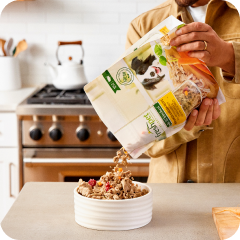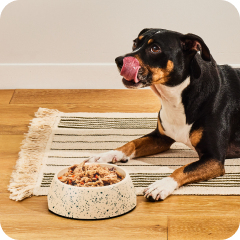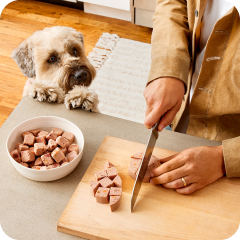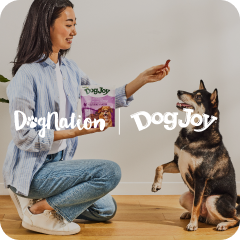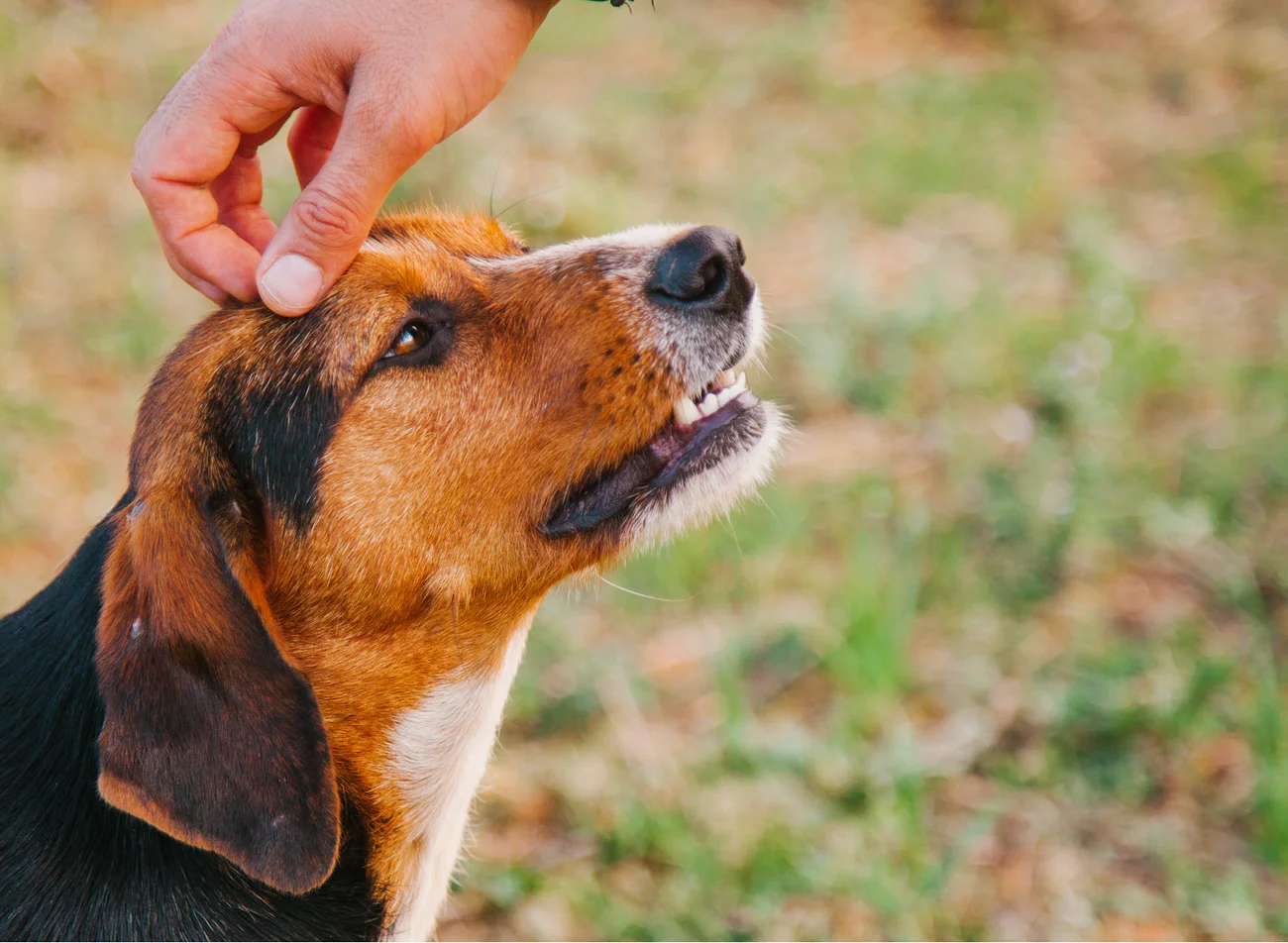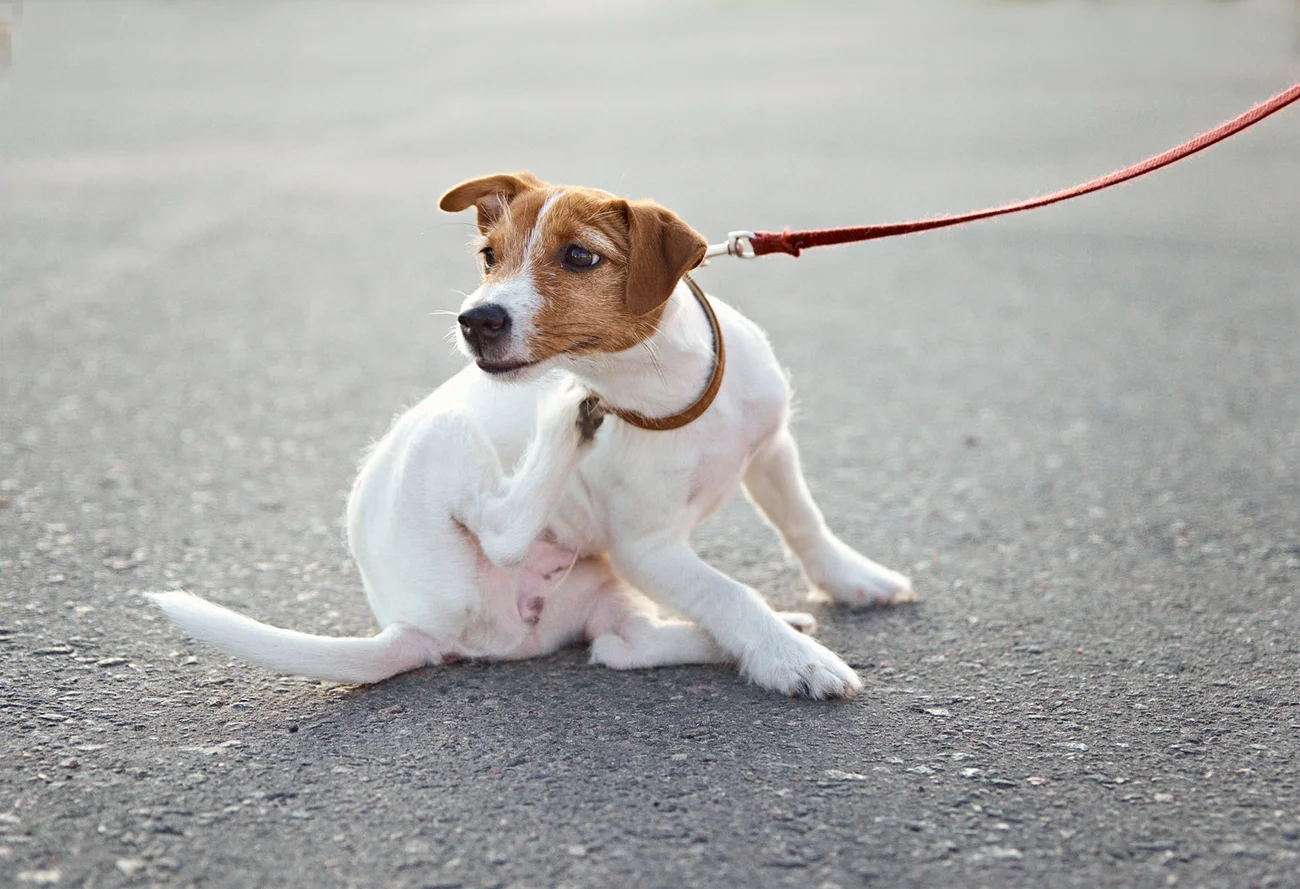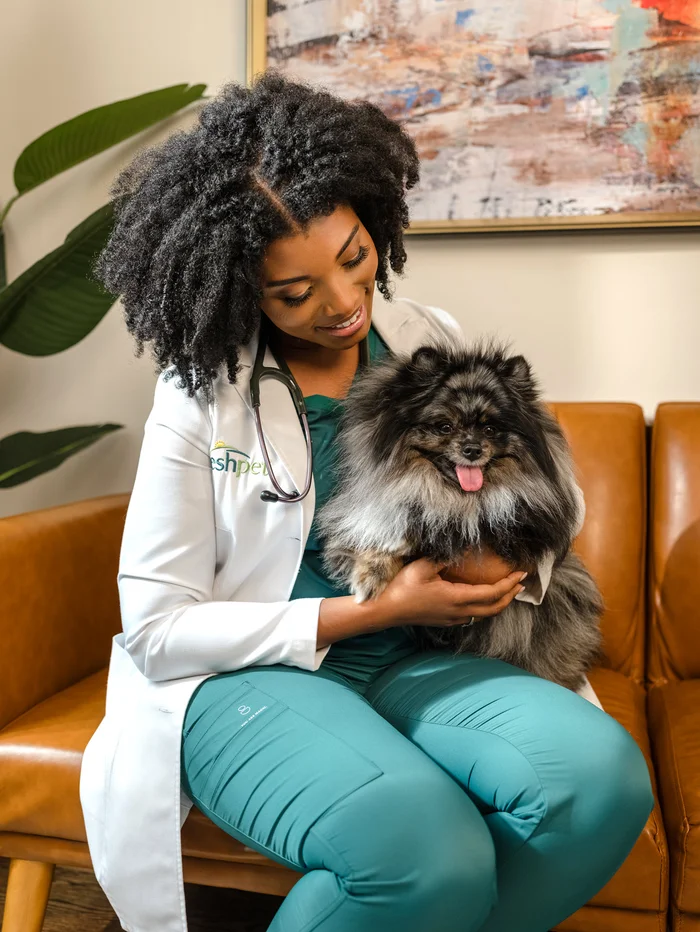
Here are a few suggestions on how to fix coat and skin issues for dogs, as recommended by Dr. Aziza, Freshpet’s expert veterinarian.
written by Ellie Walker
A dog’s coat and skin are not only the first things we notice in terms of their appearance but also their first line of defense against disease and weather. This is because a dog’s coat helps to regulate their body temperature, conserve water, and store nutrients. Knowing this, it’s clear that taking good care of your dog’s coat and skin has more benefits than just beauty. Below are a few suggestions on how to fix coat and skin issues for dogs, as recommended by Dr. Aziza, Freshpet’s expert veterinarian.
Consider using supplements
If you are wondering how to fix coat and skin issues for dogs, you first should ensure they are getting their essential fatty acids. This is because fatty acids are some of the best nutrients for maintaining a healthy coat and skin. There are two forms that we focus on in veterinary medicine:
- Omega-6: Omega-6 fatty acids are great at promoting healthy cell growth and they also help by adding shine to coats and replacing oils in the skin.
- Omega-3: Omega-3 fatty acids are needed for brain growth in puppies and to treat inflammation in the skin and joints.
Omega-3 and Omega-6 fatty acids can be purchased separately or combined in oils, chews, and capsules – the format you choose depends on you and your dog’s preference. These nutrients are also conveniently found in Freshpet's natural dog food recipes.
Choose food with high-quality ingredients
The importance of omega fatty acids is now clear, but these aren’t the only nutrients you should consider when choosing food for your dog – biotin and B vitamins are also important. Biotin and B vitamins work together with omega fatty acids to improve skin and coat health.
The good news is that eggs and sweet potatoes are naturally rich in biotin and B vitamins and are both safe dog-safe foods. Similarly, fish, fish oil, and flaxseed oil are great sources of omega fatty acids – just keep in mind that when using oils, you’ll need to check to make sure they are not expired or rancid.
If you’re looking for Freshpet's healthy dog food recipes that are high in all of these key nutrients, consider trying:
- Freshpet® Select Multi-Protein Complete Meal: Not only does this delicious recipe pack a serious protein punch, but it also features ingredients such as salmon, eggs, and sweet potatoes that are naturally rich in biotin, B vitamins, and omega fatty acids.
- Freshpet’s Nature’s Fresh Grain-Free Atlantic Salmon and Wild Alaskan Pollock: Responsibly sourced salmon and wild Alaskan pollock paired with antioxidant-rich cranberries, blueberries, spinach, and nutrient-dense sweet potato make this a tasty and nutrient-rich recipe.
Don’t neglect regular grooming
Not only does a tangled or matted coat look bad, but it can also lead to numerous health issues for your dog, including:
- Skin infection
- Scarring
- Hair loss
- General pain
If you are trying to figure out how to fix coat and skin issues such as these for your dog, you’ll be happy to know they can be prevented by having a consistent brushing routine. The length and thickness of their coat will determine the frequency at which it should be groomed, but if you choose to groom at home take a look at these seven tips. If you’re unsure how often you should be brushing your dog, ask your groomer or primary care veterinarian for guidance.
Keep an eye out for changes in your dog’s appearance
A great way to monitor your dog’s skin and coat health is to simply look at your dog – I’m not joking! By regularly monitoring the look and feel of your dog’s coat and skin, you’ll be able to tell when there are changes.
While changes in your dog’s coat will be obvious, changes in their skin can be a little more subtle. Keep an eye out for skin that is:
- Dry
- Flaky
- Red
- Moist
- Too thick
- Too thin
Changes in the skin can indicate infection, allergies, or metabolic disease to name a few. When these changes are observed, it is best to get them assessed by a veterinarian. Once they get to the root of the issue, treatment will often include dietary changes, antibiotics, medicated shampoos, and other therapeutics.
We hope that Dr. Aziza has given you a better understanding of how to fix coat and skin issues for dogs. If you have any further questions, speak to your veterinarian – they’ll be happy to discuss any health concerns.






